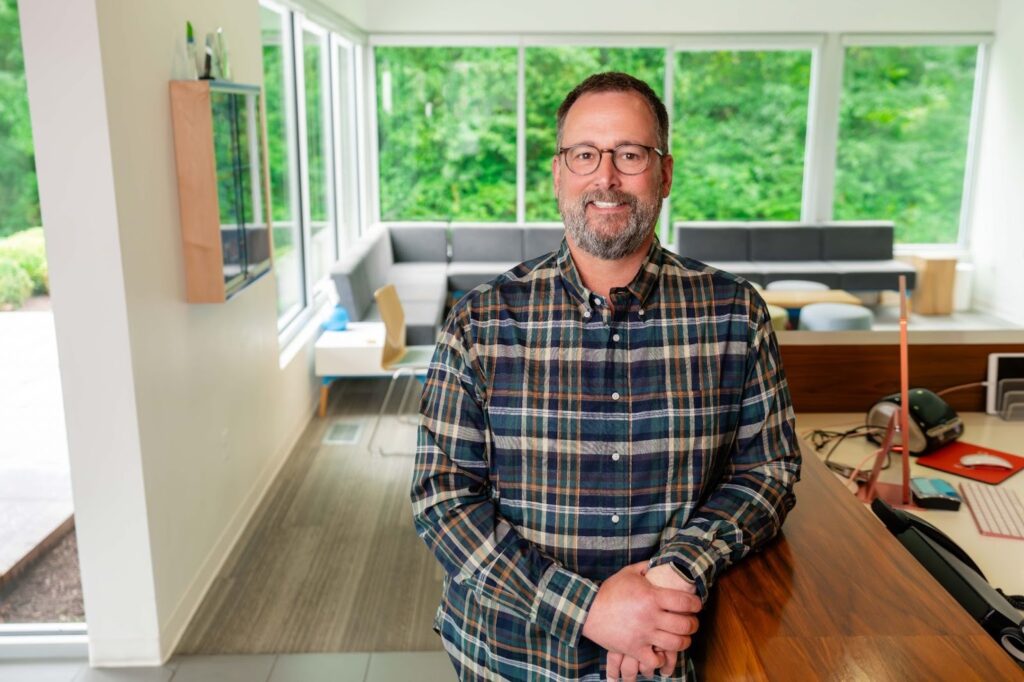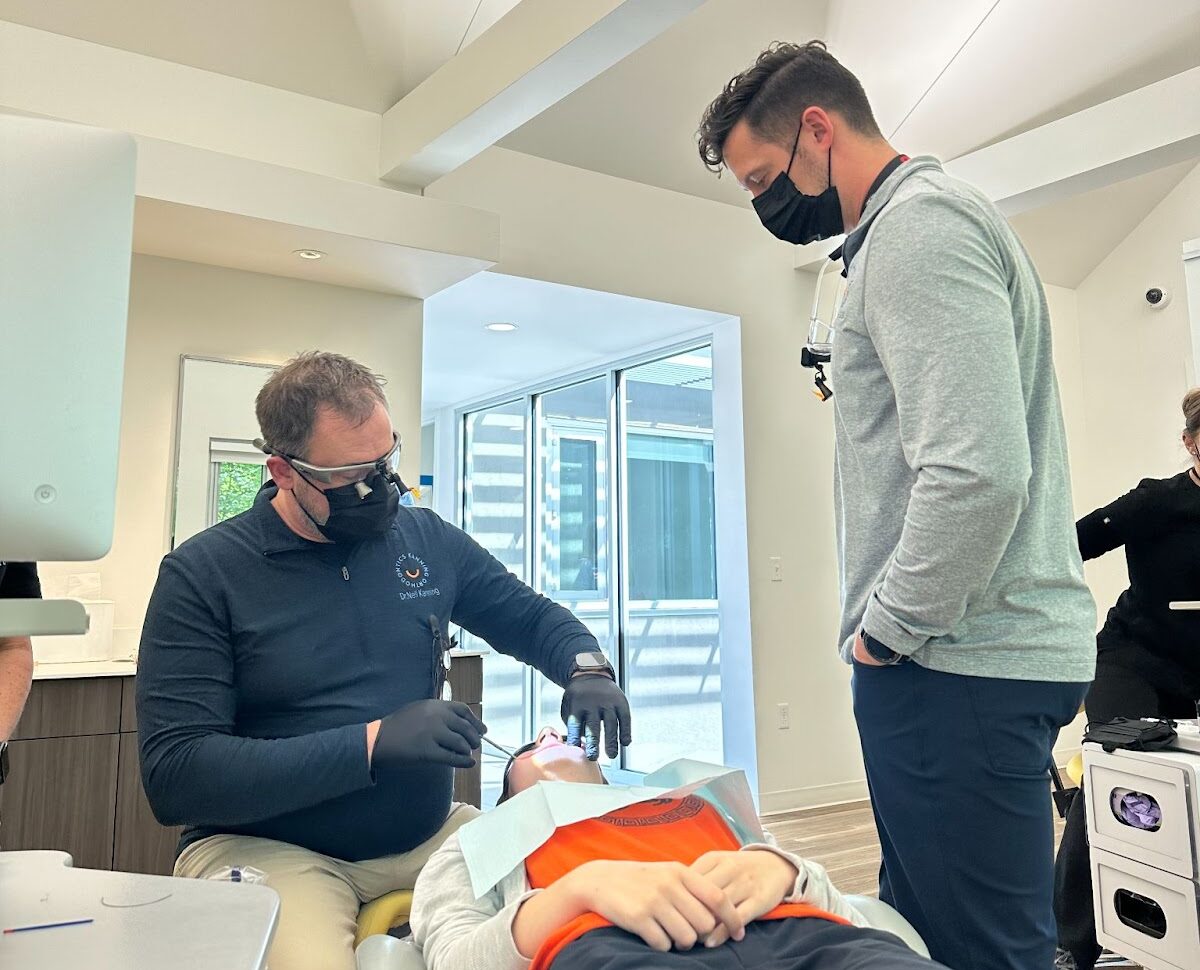Interceptive orthodontics means helping kids while they still have both baby and adult teeth. With the right timing, small steps can guide how teeth come in and how the bite fits, which often makes future braces easier and shorter.
Board-certified Dr. Kanning and Dr. Sebastian keep plans clear and practical. You will see photos and scans, you will know why we suggest a step, and you will get a timeline that fits school and sports when you visit Kanning Orthodontics.
What Interceptive Orthodontics Means
Interceptive orthodontics, also called Phase 1 treatment, describes targeted care during the mixed dentition years when baby teeth and adult teeth are both present. The goal is to guide growth and eruption while your child is still developing, so bites line up better and future treatment stays simpler.
When To Schedule That First Check
Age seven is a smart time for an orthodontic evaluation. By then, enough permanent teeth have erupted for us to spot crossbites, crowding, and growth patterns that benefit from early guidance. The American Association of Orthodontists highlights age seven as the milestone visit because the jaw and teeth are changing quickly at this stage.
Who Truly Benefits From Early Phase Treatment
Parents do not need to memorize bite diagrams. Look for practical signs instead:
- Early loss of baby teeth after a playground bump or a cavity that required extraction
- Teeth that cross in front or behind when your child bites, especially on one side
- Severe crowding that causes teeth to erupt in odd positions
- Thumb or finger habits that push front teeth forward
- A bite that looks “open” in the front or shifted to one side
Bring your child if you notice any of the above, or if your dentist suggests a visit. Many kids in Liberty Public Schools or near the William Jewell College campus come in around second grade, which lines up with typical timelines. Some children need only monitoring, and that is still a valuable visit.
Common Interceptive Tools
Our recommendations stay focused on doing the least to achieve the most. Here are the appliances and strategies you may hear about.
Palatal Expander
A small, custom device that widens the upper jaw gently. This helps correct crossbite, creates space for erupting teeth, and balances growth while a child is still developing. Addressing a narrow palate early can reduce the chance of bite problems that require more complex care later.
Space Maintainers
When a baby tooth is lost too soon, the neighboring teeth drift. A space maintainer preserves room for the incoming adult tooth so eruption follows a healthier path. Fixed maintainers, like a band-and-loop or lower lingual arch, work reliably because they do not depend on a child remembering to wear them.
Facemask or Growth-Guidance Appliances
In select cases, we guide jaw growth forward or help match the upper and lower jaws for better function.
Habit Appliances
Thumb and finger habits place constant pressure on front teeth and the palate. If positive coaching does not work, we may use a gentle reminder appliance to discourage the habit and let the bite settle into a healthier position.
Interceptive Orthodontics: What A First Visit Looks Like
Your first appointment takes about an hour. We keep it easy for kids and informative for parents.
The Conversation Is Always First
You tell us what you see at home, from chewing patterns to any speech or sleep concerns.
Next Step is Taking Images For Our Records
We take photographs, digital scans, and targeted X-rays if needed. These let us assess growth, tooth positions, and space availability.
You Will Understand What Is Happening
Dr. Kanning or Dr. Sebastian shows you exactly what is happening and why. You see where permanent teeth sit relative to baby teeth, how the jaws line up, and what growth trend we want to encourage.
A Focused Plan Is Vital
We present a do-something or monitor plan. If we recommend treatment, you see the appliance, the timeline in weeks or months, and home tips that make it smoother.
Many families stop by our Liberty office after school or visit the Kansas City location while running errands near Zona Rosa. We schedule thoughtfully so your child can still attend practice or rehearsal.

How Long Does Phase 1 Last, And How Does It Shape Phase 2
Most interceptive treatments last a few months up to about a year, depending on goals. After that, kids wear retainers or simple guidance appliances while we monitor growth. Later teen treatment, often with full braces, usually takes less time when Phase 1 solves critical problems early.
Home Habits That Support Early Treatment
A few different habits at home can help support your teen during their orthodontic journey.
- Keep toothbrushing consistent, especially around bands and expanders
- Use a water flosser or floss threaders to reach around appliances
- Follow the appliance turn schedule exactly if your child wears an expander.
- Stick with foods that are gentle on wires and attachments. Some foods to avoid are sticky candies and hard chips
- Encourage nasal breathing and the tongue-to-palate rest position, which supports facial growth patterns
We teach your child how to care for any appliance and send you home with written tips. Our team makes sure questions get answers before you leave.
How To Decide If Now Is The Right Time
Use this checklist as you think it over:
- Crossbite or shifting bite, you can see
- Early loss of baby teeth with drifting neighbors
- Crowding that traps erupting teeth
- Ongoing thumb or finger habits after age six or seven
- Breathing or speech concerns that your pediatrician or dentist has flagged
If two or more apply, schedule a visit. If you feel unsure, come in anyway. A timely evaluation can confirm that growth is on track and that peace of mind matters.

Start With A Clear Phase 1 Plan
Dr. Kanning and Dr. Sebastian explain what to do now and what to monitor. The team at Kanning Orthodontics provides a simple timeline, home care tips, and cost estimates. Choose the location that works best with two convenient offices in Liberty and Kansas City.



